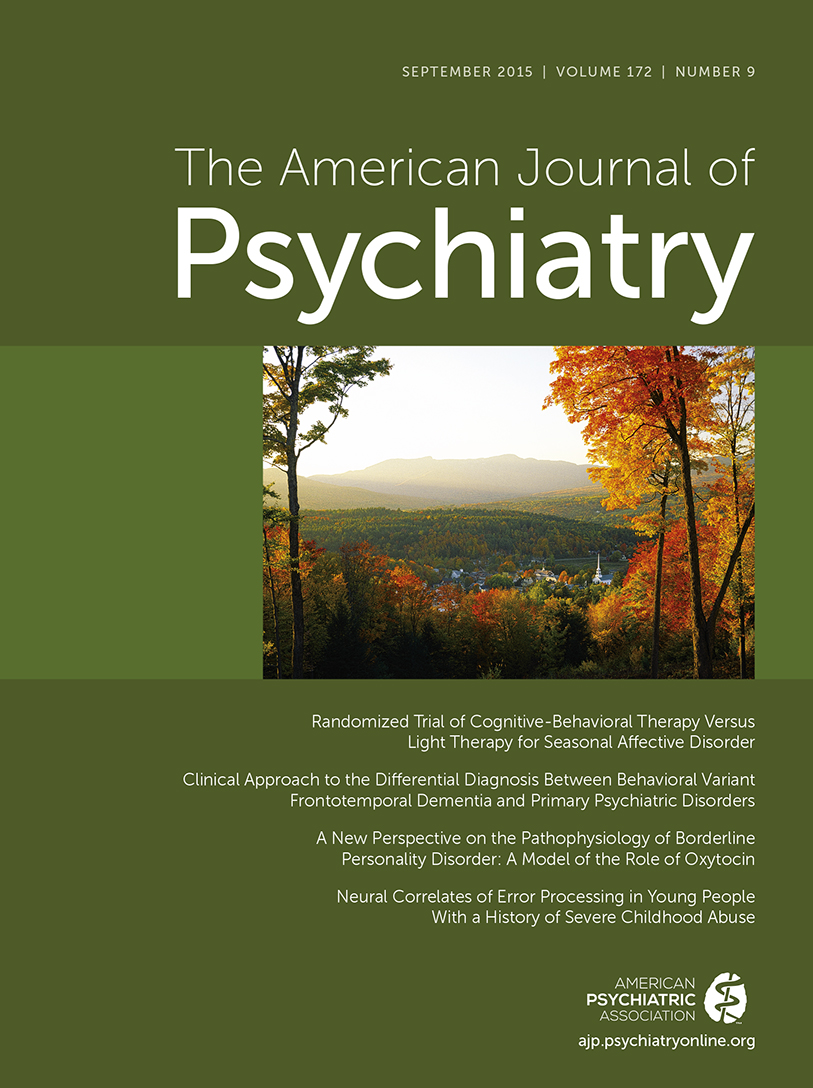Edible Cannabis–Induced Psychosis: Intoxication and Beyond
To the Editor: Since the legalization of recreational marijuana in Colorado in January 2014, edibles comprise almost half of total cannabis sales (1). Edibles include various candies, pills, drinks, and baked goods infused with 100 mg or less of tetrahydrocannabinol (THC), with a recommended starting dosage of 10 mg (2). This case series includes five patients discharged with edible cannabis–induced psychosis from Psychiatric Emergency Services at Denver Health Medical Center during July and August 2014 (Table 1). These patients were daily cannabis smokers who all reported using greater than 10 times the recommended dose of 10 mg of THC before admission without using any other substances. In all of these cases, psychosis resolved within 1–2 days with treatment, and all patients returned to their baseline, normal mental state. In no case was further psychiatric treatment recommended at discharge. Two patients had one previous episode of inhaled cannabis–induced psychosis. Otherwise, there was no past psychiatric history among the cohort. Family history was positive in one case for schizophrenia and bipolar disorder but otherwise unknown because two patients were adopted and two were “unsure” of family history.
| Case | Chief Complaint | History of Present Illness | Exam | Treatment |
|---|---|---|---|---|
| 34-year-old Caucasian female hairdresser | “My eyes are open and I am following the Lord.” | 3 days of bizarre behavior with insomnia, intermittent euphoria, paranoia | Labile, disorganized thinking, poor insight and judgment, hyperreligious delusions | Intramuscular haloperidol in the emergency department; seclusion and oral risperidone in Psychiatric Emergency Services |
| 35-year-old Caucasian female homemaker | “I’m trying to fight for my freedom.” | 3 days of bizarre behavior with rapid speech and flight of ideas | Disorganized thinking, flat affect, poor insight and judgment, grandiose delusions, auditory and visual hallucinations | In Psychiatric Emergency Services; intramuscular haloperidol and lorazepam, then oral risperidone |
| 25-year-old African American male, currently unemployed | “When I was driving, something told me to get home immediately so I panicked and jumped.” | At least 1 day of bizarre behavior and paranoia | Combative and agitated with disorganized thinking | Intramuscular haloperidol and midazolam in the field; restraints in the emergency department |
| 27-year-old Caucasian male contractor | “I’ve had thoughts of jumping off my balcony.” “I am God.” | 4 days of suicidal ideation, insomnia, depressed mood | Grandiose delusions, disorganized thinking, depressed affect | Oral olanzapine in Psychiatric Emergency Services |
| 22-year-old Caucasian male student | “I mutilated myself because friends wanted their energy back.” | 1 day of bizarre, disorganized thinking and question of self-inflicted incision to the left neck | Labile, agitated, disorganized with flight of ideas and loose associations | Intramuscular midazolam and haloperidol in the emergency department |
TABLE 1. Patients Discharged with Edible Cannabis–Induced Psychosis from Psychiatric Emergency Services at Denver Health Medical Center
The peak serum concentration of orally absorbed THC is delayed compared with inhaled administration and is not reached until 1–3 hours have elapsed (3). These patients reported eating the suggested serving size but then consumed over 100 mg of THC after they “didn’t feel anything” and decided to eat multiple portions. As regular inhaled cannabis users, multiple patients expected to experience a similar quick onset of psychoactive effects (after a few minutes) and did not wait the full 3 hours it takes for THC to be absorbed (3). They also reported feeling that it was practical to consume the entire edible product, be it a candy bar or a baked good, in one setting just as they would with a regular baked good, disregarding the danger of consuming 100 mg of THC. Differences in oral metabolism likely play a role in the development of acute psychosis in these patients who regularly smoke cannabis. Oral administration produces the active metabolite (11-OH-THC), which is proposed by Favrat and colleagues to reach the target (i.e., the CB1 receptor site) more efficiently (4). And as previously noted, these patients reported a large intake. As a gauge, an active metabolite (THC-COOH) level for an occasional user is <3 ng/mL and for a heavy user >40 ng/mL; one of our patients had a level of >500 ng/mL (5).
Our hospital professionals have learned to ask specifically about cannabis, edibles, and synthetic cannabis when interviewing patients, as patients no longer seem to associate these items with “drugs” during an initial history taking. We advise that clinicians should be aware that edibles containing cannabis, because of pharmacokinetic differences, may be more likely to induce psychosis, which may outlast the period of intoxication. We also advise that the syndrome can be treated with antipsychotics and will resolve completely within days.
A limitation to this case series is that all history, including information on cannabis use, was gathered through self-reporting.
1 : Proposed Colorado marijuana edibles ban shows lingering pot discord. Denver Post, Oct 20, 2014. Available from: http://www.denverpost.com/news/ci_26765732/proposed-colorado-marijuana-edibles-ban-shows-lingering-pot; accessed Jan 31, 2015Google Scholar
2 : Market Size and Demand for Marijuana in Colorado. Colorado Department of Revenue. 2014. Available from: https://www.colorado.gov/pacific/sites/default/files/Market%20Size%20and%20Demand%20Study,%20July%209,%202014%5B1%5D.pdf; accessed Jan 20, 2015Google Scholar
3 : The pharmacologic and clinical effects of medical cannabis. Pharmacotherapy 2013; 33:195–209Crossref, Medline, Google Scholar
4 : Two cases of “cannabis acute psychosis” following the administration of oral cannabis. BMC Psychiatry 2005; 5:17Crossref, Medline, Google Scholar
5 : Fitness to drive and cannabis: validation of two blood THCCOOH thresholds to distinguish occasional users from heavy smokers. Forensic Sci Int 2014; 242:1–8Crossref, Medline, Google Scholar



